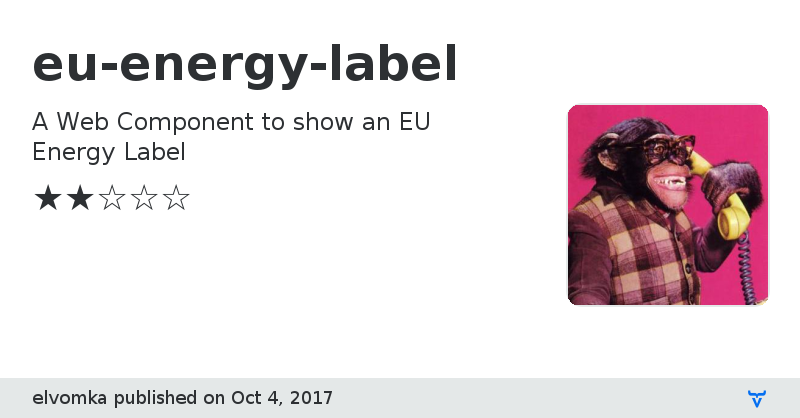eu-energy-label - Vaadin Add-on Directory
A Web Component to show an EU Energy Label
**[ This description is mirrored from README.md at [github.com/elvomka/eu-energy-label](https://github.com//elvomka/eu-energy-label/blob/1.0.3/README.md) on 2019-05-10 ]**
# eu-energy-label
A (vanilla) Web Component to show an EU Energy Label.
[](https://www.webcomponents.org/element/elvomka/eu-energy-label)
## Demo
Example how to create a "Directive 2010/30/EU" energy label (colors need adjustment, see next demo):
```html
```
Example of of arbitrary label content and using the CSS custom properties:
```html
```
## Usage
In order to use the `eu-energy-label`, you need to configure two parameters:
* efficiency classes: The available energy efficiency classes to display
* selected class: The selected (active) energy efficiency class to highlight
These parameters can either be set via attribute- or property-value on the `eu-energy-label` instance.
### Attributes and properties
To configure the available 'efficiency classes', use either the `efficiency-classes` attribute or the `efficiencyClasses` property and pass it a comma-separated list of labels for the efficiency classes you want to display. The order of the items in the comma-separated list will go from the top to the bottom of the efficiency scale.
To configure the 'selected class' that will be highlighted, use the `selected-class` attribute or the `selectedClass` property and pass it a value that also exists in the 'efficiency classes' list.
### CSS custom properties
The webcomponent exposes a number of CSS custom properties (variables) which allow to customize the look of the rendered energy efficiency label. For details, please have a look at the top of the file `eu-energy-label.html`.
## Contributing
1. Fork it!
2. Create your feature branch: `git checkout -b my-new-feature`
3. Commit your changes: `git commit -am 'Add some feature'`
4. Push to the branch: `git push origin my-new-feature`
5. Submit a pull request :D
## License
MIT License
Online DemoDocumentation
GitHub Homepage
View on GitHub
Issue tracker
eu-energy-label version 1.0.0
### Dependencies
eu-energy-label version 1.0.1
### Dependencies
eu-energy-label version 1.0.2
### Dependencies
eu-energy-label version 1.0.3
### Dependencies